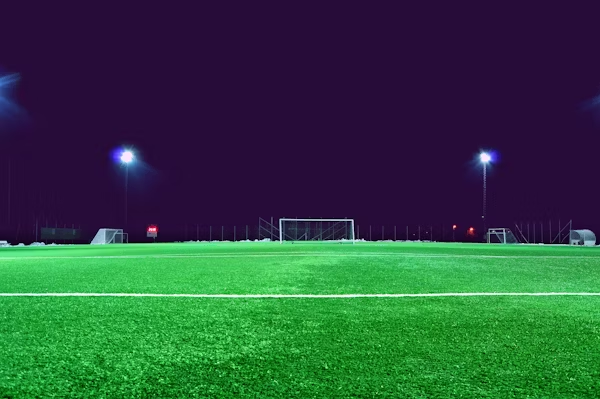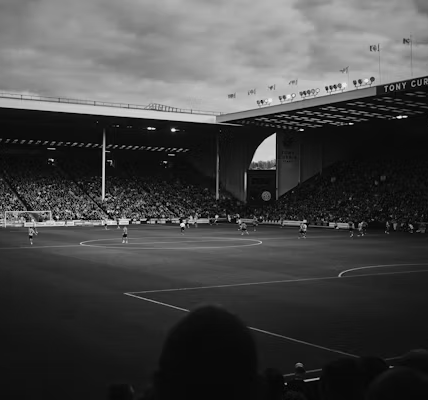In the world of soccer, penalties are often high-stakes moments that test a player’s nerve and skill. The Panenka penalty, a technique both audacious and artistic, stands out among the traditional ways of converting a penalty. It is named after Czech footballer Antonín Panenka, who first showcased this clever and daring penalty style during the 1976 UEFA European Championship final. Since then, it has become one of the most iconic and memorable ways of taking a penalty, celebrated for its audacity and finesse. This article delves into the history, technique, and cultural impact of the Panenka penalty, exploring how it became a staple in footballing culture and continues to captivate fans and players alike.

Origins of the Panenka Penalty
The Panenka penalty’s birth can be traced back to the 1976 European Championship final between Czechoslovakia and West Germany. It was a tense match that had reached a penalty shootout after a 2-2 draw. The game was poised on a knife-edge, and it was in this intense moment that Antonín Panenka took the spotlight.
Instead of going for the typical hard, driven shot aimed at a corner or the goalkeeper’s side, Panenka chose to chip the ball delicately over the head of German goalkeeper Sepp Maier. The ball floated into the net with sublime precision, a move that stunned both spectators and players alike. This was the birth of what would later become known as the “Panenka penalty.”
What made the technique so revolutionary was its boldness and its ability to outsmart the goalkeeper. Panenka had read Maier’s positioning, noticing the goalkeeper would often dive to one side. By lifting the ball gently into the center of the goal, Panenka made a risky yet brilliant move that turned out to be a match-winning moment. His innovative technique was so unique that it would be forever associated with his name, thus creating the “Panenka penalty.”
How to Execute a Panenka Penalty
The Panenka penalty is an elegant yet risky technique that requires a mixture of composure, precision, and nerve. To pull it off successfully, the player must read the goalkeeper’s movements while maintaining the confidence to execute the shot. Here’s a step-by-step breakdown of how it’s done:
Approach: Unlike the typical penalty kick, where the player takes a more direct and forceful approach to strike the ball, the Panenka requires a softer, slower run-up. The key is to make the goalkeeper believe you are going for a conventional shot, only to surprise them with a delicate chip.
Focus on the Goalkeeper: The success of the Panenka often hinges on the goalkeeper’s positioning. A good penalty taker will take note of the goalkeeper’s tendencies, such as whether they dive early or favor one side.
The Strike: Instead of hitting the ball with the instep or side of the foot (as in a regular penalty), the player uses the inside of the foot to gently lift the ball into the air, aiming for the center of the goal. The idea is to get the ball to float just over the goalkeeper’s head while ensuring it doesn’t lack the power to make it to the goal.
Timing and Precision: The execution of the Panenka requires impeccable timing. It is a high-risk move because if the goalkeeper doesn’t dive, the ball might lack the power to go in, and it could be easily caught or cleared.
Celebration and Nerve: After a successful Panenka, the player often celebrates the technique, knowing that it’s a moment of brilliance. If it fails, however, it can lead to significant embarrassment, adding pressure on the penalty taker.
The Panenka’s Legacy in Modern Football
Over the years, the Panenka penalty has gone from a novelty to a respected and often utilized technique. It’s now seen as a mark of a player’s confidence and ability to read the goalkeeper. Its prevalence in penalty shootouts, particularly in high-stakes moments, has only increased, with more and more players attempting the technique at various levels of the game.
As penalty shootouts have become a more common part of high-level football, the Panenka has evolved from a one-off trick to a strategic move in many players’ repertoires. While the technique remains a risk, it’s a testament to the creativity and flair that defines modern football. The Panenka has been used by some of the world’s best players, including Cristiano Ronaldo, Neymar, and even in youth football, where aspiring players look to replicate the magic of their heroes.
The Panenka Penalty in Popular Culture
It has become a symbol of daring and creativity, inspiring everything from social media memes to references in films and television shows. The phrase “pulling off a Panenka” has become shorthand for taking a bold risk and pulling it off with finesse. It’s a technique that has transcended sport and become part of popular culture, especially in countries where football is a way of life.
The Panenka also embodies the spirit of football itself—unpredictable, full of flair, and capable of surprising even the most seasoned fans. For footballers, executing a successful Panenka is a moment of personal triumph, while for fans, it’s a thing of beauty that showcases the artistry of the beautiful game.
In Summary
The Panenka penalty is a stunning example of the creativity and audacity that football often rewards. It’s a technique that has its roots in a single, bold moment in the 1976 European Championship but has grown into a symbol of confidence and skill in the years since. From Antonín Panenka’s iconic chip to the many players who have attempted it in high-profile matches, the technique continues to captivate fans and inspire players around the world.
Whether it’s a moment of brilliance or a risky failure, the Panenka penalty will forever be remembered as one of the most innovative and daring moves in football history.
FAQs
How do you execute a Panenka penalty?
To execute a Panenka penalty, follow these steps:
Approach: Take a slow, deliberate run-up to deceive the goalkeeper into thinking you’ll strike the ball hard.
Read the goalkeeper: Watch the goalkeeper’s positioning—most will dive to one side, leaving the center open.
Strike: Use the inside of your foot to chip the ball delicately into the center of the goal.
Timing: The key is to maintain perfect timing—don’t hit the ball too hard or too soft, and make sure it floats just over the goalkeeper’s head.
What makes the Panenka so effective?
The Panenka penalty works because it catches the goalkeeper off guard. Goalkeepers tend to anticipate a powerful shot to one side, so the soft chip straight down the middle often surprises them. The move also showcases a high level of confidence and skill, making it a memorable moment when executed correctly.
Which players have successfully used the Panenka penalty?
Over the years, many famous footballers have successfully used the Panenka penalty in high-pressure situations. Some of the most notable examples include:
Zinedine Zidane: His Panenka in the 2006 World Cup final against Italy remains iconic.
Andrea Pirlo: The Italian midfielder scored a memorable Panenka in the Euro 2012 quarterfinals against England.
Lionel Messi: Messi has pulled off Panenkas in multiple competitions, including the 2015 Copa América semifinal against Chile.
Sergio Ramos: In the 2016 UEFA Champions League final, Ramos scored a Panenka to help Real Madrid secure the title.
Is the Panenka penalty still used in modern football?
Yes, the Panenka penalty remains a popular technique in modern football, especially in high-stakes penalty shootouts. Players like Cristiano Ronaldo, Neymar, and Kylian Mbappé have all attempted the technique in recent years. The move has become a staple in penalty shootouts due to its psychological impact on goalkeepers and its ability to surprise them.
What is a Panenka penalty?
A Panenka penalty is a technique used in soccer where the player chips the ball gently into the center of the goal instead of powering it to the side or corner. The ball is lifted with a delicate touch over the goalkeeper’s head, catching them off guard if they dive in the wrong direction. It is considered a bold and audacious move, as the player risks missing or having the goalkeeper catch.
To read more, click here



